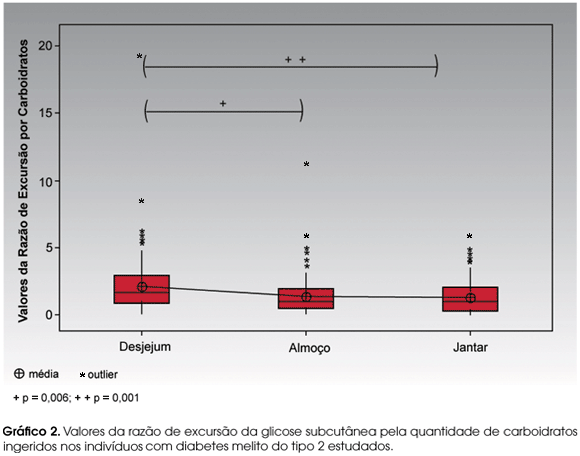OBJECTIVES: Through the analysis of a group of type 2 diabetes patients, the aims of this study are: to evaluate through CGMS (continuous glucose monitoring system) the post-prandial subcutaneous glucose excursions; to analyze the correlations between subcutaneous glucose and capillary glycemia with HbA1c and to evaluate the effectiveness, safety and broadmindedness of the CGMS. METHODS: Forty type 2 diabetes patients were analyzed, with HbA1c until 7.3%, in use of oral agents and within less than a ten-year diagnosis. They were submitted to CGMS for 72h, whose data were compared with HbA1c and capillary glycemia. RESULTS: The average subcutaneous glucose excursion at breakfast was statistically bigger than at dinner (95%CI -24,96 a -1,66). The subcutaneous glucose excursion/meal carbohydrates content ratio was statistically bigger at breakfast than at other meals (p 0,001). There was no correlation between the levels of subcutaneous glucose and capillary glycemia with HbA1c. There weren’t complications using CGMS. CONCLUSIONS: The subcutaneous glucose excursions were predominant at breakfast. There were no correlations between HbA1c and glycemic control parameters. CGMS showed itself efficient, secure and well tolerated in this group of patients.
Post-prandial hyperglycemia; Post-breakfast glycemia; Continuous glucose monitoring system; Glycemic index; Glycated hemoglobin; Type 2 diabetes mellitus



